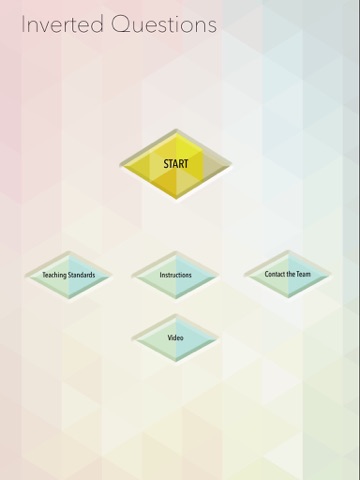
Inverted Questions app for iPhone and iPad
Developer: Teacher Learning Network
First release : 04 Dec 2015
App size: 54.34 Mb
Peer observation is a proven strategy for increasing your effectiveness as a teacher. Research has shown that focused, specific, data-rich feedback and collegial conversations lead to real improvement in practice.
Each App in this suite is designed to give teachers feedback on one element of their practice. By inviting a colleague to observe your use of inverted questions you’ll be best able to strategically use them.
Inverted questions: Frequency graph
What this App measures
This App measures the number of times that a teacher asks a specific type of question, an inverted question, within a defined period of time.
Why that matters
Inverting a question moves it from being a closed question to an open question. This is a higher order question that enables a teacher to seek out more sophisticated answers from students and tests their ability to provide reasons for an answer. See more on the video.
What you need to know to use this App effectively
An inverted question involves presenting students with an answer and then asking them why this is correct e.g. ‘Is 13 a prime number?’ becomes ’13 is a prime number. Why do we call it that?’ The fact is given and the challenge for the student is to explain how or why this is the case.
Tap on the button each time you hear an inverted question
What does the data show
The completed data will show when the teacher asked an inverted question in a defined period of time. If several opportunities to respond were offered in a concentrated period the graph lines appear darker.
How the data can be used in teacher coaching
Asking inverted questions is quite a specific skill and it is likely that observation periods will be quite short. Expert teachers formulate inverted questions quite quickly so data that shows that a teacher does this frequently in a classroom is likely to be an indicator that the teacher is skilled and comfortable with questioning technique. See more on the video.



